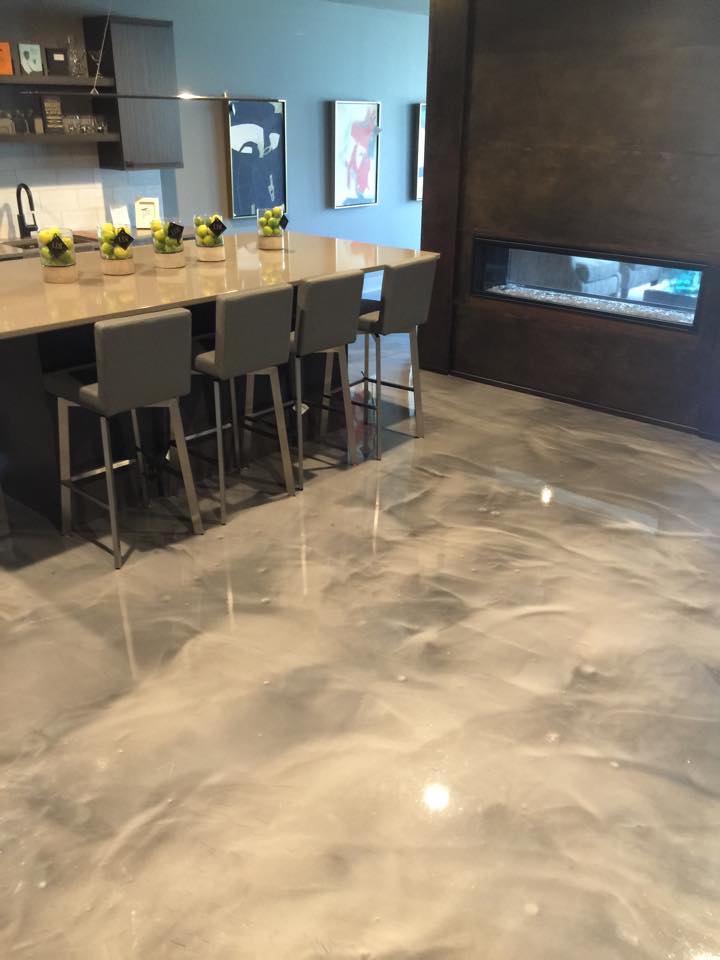
![]()
One of the few complaints we hear about residential concrete floors is that they are cold. There’s a very good solution for this if you are considering installing concrete floors when building your home. Radiant heat is the answer. Radiant heat is one of the best options for a home heating system. With radiant heat you don’t have to listen to clanking or humming from the furnace, there’s no whooshing like there is from the ductwork, and radiant heat doesn’t spread dust and allergens throughout the home like ductwork does. It’s just a enjoyable blanket of heat spread evenly across your floor.
One of the biggest appeals of radiant heated residential floors is the fact that it doesn’t include everything listed above. It’s invisible, think about it a heating system that you can’t hear or see, what’s not to love about that? Besides it being completely invisible it actually reduces energy costs, so it’s a very efficient way to heat your home as well!
So, how does radiant heat work in floors? Either water tubes or electric wires are covered by concrete and it is allowed to set. The water tubes or electric wires then create invisible heat waves that rise from inside the floor and heat anything touching the floor. This helps to keep you warm by preventing surfaces from taking your body heat, which can make you feel cold. Heated floors will help keep you comfortable.
In traditional forced air heating systems, air blows from the registers at about 120 degrees and rises to the ceiling where it loses the heat quickly then lowers down into the room as it cools. The unevenness of the air in the room is uncomfortable when this happens because the upper part of your body is very warm while the lower half, especially the feet, are very cold. Another problem with forced air heat is the cycling. The temperature rises quickly to 70 degrees and then the furnace turns off. This has been referred to as the “cold 70”, which is the feeling you have when the heat just turns off and stops coming out of the vents. With radiant heated floors you don’t get the ups and downs like you do with only forced air. The floors will reach usually no more than 85 degrees on a very cold day. The warm air will still rise, but it disperses evenly over the whole floor which allows the coolest floor to stay at ceiling level.
There are two options for radiant heated floors. There is electricity or hot water. With electric radiant heat the resistance wire is looped in a zigzag pattern and is typically installed in a single room like a kitchen or bathroom. With hot water, or hydronic systems, water is circulated from a water heater through ½ inch tubes made of polyethylene. The tubing is flexible and can be installed directly into the concrete, on top of the subfloor in panels or in snap-in grids, or it can be clipped into aluminum strips below the floor (e.g. hardwood or tile). You can cover a hydronic system with most types of floor finishes, but carpet is difficult, especially if it has thick padding. Radiant heating isn’t recommended for carpeting because cold floors shouldn’t be an issue with carpet.
Overall, the hydronic system is the more affordable and popular option when you want to heat your entire house. It costs more to install than electricity, which can range from $6 to $15 a square foot, which varies depending on if you are building a new home or putting the system in an existing home. The lesser cost tends to be in new builds when the tubes are in the concrete. You will also still need an air-conditioning system for cooling, the floors only radiate heat. But once it’s installed and running the radiant heat can be up to 30% more efficient than a traditional forced air heating system if the home is well insulated. And in the category of comfort, radiant system always comes out on top. (Learn more about radiant heated floors here.)
